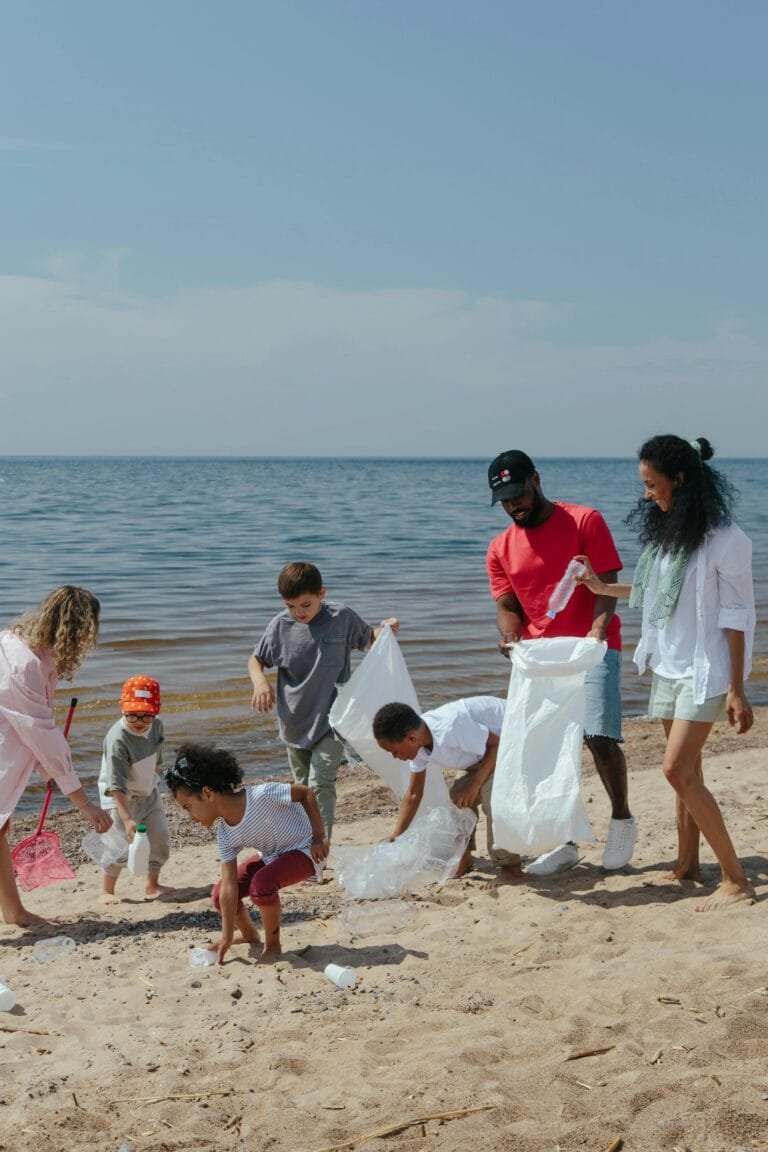Table of Contents
Introduction
The health of our environment defines the health of humanity. Every year, 26th November is observed as World Environment Protection Day, a day dedicated to promoting the sustainable use of resources and combating environmental degradation. It is a clarion call to protect nature, address global ecological challenges, and encourage people worldwide to embrace eco-friendly lifestyles.
As climate change accelerates, forests shrink, and oceans choke on plastic, the significance of this day becomes ever more pronounced. This blog explores the origins, challenges, success stories, and actionable ways to participate in this global mission for a greener, cleaner future.

Why is World Environment Protection Day Important?
Nature forms the backbone of life, providing essentials such as air, water, food, and energy. However, unchecked human activities—deforestation, overuse of fossil fuels, and improper waste disposal—have destabilized the planet’s delicate ecosystems. World Environment Protection Day aims to:
- Raise Global Awareness: Educate individuals and communities about pressing environmental issues like climate change, pollution, and resource depletion.
- Inspire Collaborative Action: Encourage governments, businesses, and individuals to join forces in tackling environmental challenges.
- Advocate Sustainable Practices: Highlight methods that reduce ecological footprints and promote harmonious living with nature.
By dedicating a day to the environment, we reaffirm our responsibility to prioritize planetary health for current and future generations.
The Challenges Facing Our Planet
The environment faces numerous interconnected issues, each demanding urgent attention:
1. Climate Change and Rising Temperatures
Global temperatures have increased dramatically due to greenhouse gas emissions from burning fossil fuels. This has led to erratic weather patterns, melting polar ice, and rising sea levels.
- Impact: More frequent natural disasters, loss of biodiversity, and challenges to food production.
- Solution: Shift to renewable energy sources, reforestation projects, and energy efficiency.
2. Deforestation
Deforestation, driven by agriculture, urbanization, and logging, results in habitat loss and diminished carbon absorption. Forests play a vital role in stabilizing the climate, yet millions of hectares are destroyed every year.
- Impact: Loss of wildlife habitats, increased carbon emissions, and disruption of the water cycle.
- Solution: Support forest restoration projects and implement policies against illegal logging.
3. Ocean Pollution
Marine ecosystems face significant threats from plastic waste, oil spills, and chemical runoff. Over 8 million tons of plastic waste enter oceans annually, endangering marine life and affecting the global food chain.
- Impact: Damage to aquatic ecosystems and a decline in marine biodiversity.
- Solution: Promote recycling initiatives, ban single-use plastics, and develop waste management systems.
4. Air Pollution
Urbanization and industrialization have increased air pollution, with harmful emissions from vehicles and factories contributing to smog and poor air quality.
- Impact: Respiratory illnesses, reduced agricultural yields, and shorter life expectancy.
- Solution: Promote electric vehicles, clean energy solutions, and green public transport.
5. Loss of Biodiversity
Unsustainable practices like overfishing, mining, and deforestation have pushed countless species toward extinction. Healthy ecosystems, which rely on biodiversity, are essential for food security and climate resilience.
- Impact: Disruption of ecosystems, collapse of pollination networks, and reduction in natural resources.
- Solution: Enforce conservation laws, expand protected areas, and encourage sustainable agriculture.
How to Take Action This World Environment Protection Day
Everyone has the power to contribute. Here are practical steps individuals, communities, and organizations can take:

For Individuals
- Plant Trees: Trees provide oxygen, reduce carbon dioxide, and offer shelter to wildlife.
- Reduce, Reuse, Recycle: Minimize waste and maximize the life cycle of products.
- Go Energy-Efficient: Opt for LED lights, energy-saving appliances, and renewable energy.
For Communities
- Clean-Up Drives: Organize efforts to remove waste from parks, rivers, and beaches.
- Start Composting Projects: Reduce landfill waste and improve soil quality by composting organic matter.
Create Green Spaces: Establish community gardens to promote urban greenery and local food production.
For Businesses
- Adopt Green Supply Chains: Prioritize sustainable sourcing and minimize packaging waste.
- Support Conservation Projects: Partner with NGOs working to protect ecosystems.
Invest in Clean Energy: Shift to renewable sources like wind and solar power.
The Role of Education in Environmental Preservation
Education is a cornerstone of environmental protection. By raising awareness among young people, we can foster a generation of eco-conscious leaders who are equipped to drive change. Schools, universities, and community programs can:
- Incorporate Environmental Studies: Teach students about sustainable practices, conservation, and climate change.
- Host Eco-Awareness Campaigns: Organize events like tree-planting drives and waste reduction workshops.
- Encourage Eco-Innovation: Support projects that develop innovative solutions to environmental problems.
10 Inspiring Success Stories of Environmental Action
- Costa Rica’s Green Transformation : Costa Rica generates nearly 99% of its electricity from renewable sources and is a global leader in reforestation efforts.
- Bhutan’s Carbon-Negative Status : This small Himalayan country absorbs more carbon dioxide than it emits due to its extensive forests and eco-friendly policies.
- Germany’s Renewable Energy Drive : Germany’s Energiewende initiative focuses on phasing out coal and nuclear power in favor of wind and solar energy.
- Rwanda’s Plastic Ban : Rwanda became one of the first nations to completely ban plastic bags, setting an example for global plastic reduction efforts.
- The Great Green Wall : Stretching across Africa, this project aims to restore degraded lands and combat desertification through mass tree planting.
- The Ocean Cleanup Initiative : This innovative project uses technology to remove plastic waste from oceans, focusing on areas like the Great Pacific Garbage Patch.
- Rewilding in Europe : Countries like the Netherlands are restoring ecosystems by reintroducing native species such as bison and beavers.
- Indonesia’s Mangrove Restoration : Indonesia is restoring mangroves to protect coastal areas from erosion and provide habitats for marine life.
- Urban Forests in India : Urban areas in India are creating mini forests to improve air quality and enhance biodiversity within cities.
- Solar Villages in Bangladesh : Bangladesh has installed solar systems in rural areas, providing clean energy to over 4 million households.
Conclusion: A Collective Responsibility
World Environment Protection Day is a powerful reminder that the health of our planet depends on our actions. Every small step—whether planting a tree, reducing waste, or supporting green initiatives—contributes to the global mission of creating a sustainable future.
As we observe this day on 26th November, let’s commit to making lasting changes that protect the environment for future generations. Together, we can ensure that Earth remains a thriving home for all its inhabitants.
Call to action : Protect the Planet Today
World Environment Protection Day is more than a day of reflection—it’s a call to act decisively. Here are three impactful ways you can contribute:
Engage Locally: Join hands with community initiatives like neighborhood clean-ups, tree-planting events, or volunteering for ecological projects.
Embrace Sustainability: Choose reusable products, cut down on energy consumption, and prioritize renewable energy whenever possible.
Advocate for Change: Support efforts to strengthen environmental legislation and encourage businesses to adopt environmentally responsible practices.
Every step, no matter how small, brings us closer to a healthier, more sustainable future. Let’s work together to create a wave of positive transformation.
FAQs
Q.1 Why is 26th November significant for environmental protection?
A. It is observed globally to encourage awareness and action to combat environmental challenges.
Q.2 How does biodiversity benefit humans?
A. Biodiversity supports essential processes like pollination, water purification, and soil fertility, all vital for human survival.
Q.3 What role does technology play in environmental conservation?
A. From renewable energy systems to AI-driven wildlife monitoring, technology enables innovative solutions to environmental problems.
Q.4 Can one person make a difference?
A. Absolutely! Individual efforts, such as reducing waste and conserving energy, contribute to larger environmental goals.
Q.5 What are the biggest contributors to pollution?
A. Industries, transportation, agriculture, and improper waste management are major culprits.
Q.6 What steps can businesses take to protect the environment?
A. Businesses can reduce emissions, adopt green supply chains, and support conservation projects.
Q.7 What are some eco-friendly alternatives to common items?
A. Here are some eco-friendly alternatives –
- Metal straws instead of plastic.
- Bamboo toothbrushes over plastic ones.
- Cloth shopping bags instead of disposable ones.
Q.8 Why is renewable energy important?
A. Renewable energy reduces greenhouse gas emissions and provides a sustainable alternative to fossil fuels.
Q.9 What happens if we don’t act now?
A. Failure to address environmental issues will lead to resource scarcity, extreme weather events, and global health crises.
Q.10 How can children contribute to environmental protection?
A. Children can participate in school eco-clubs, learn about recycling, and plant trees in their communities.
